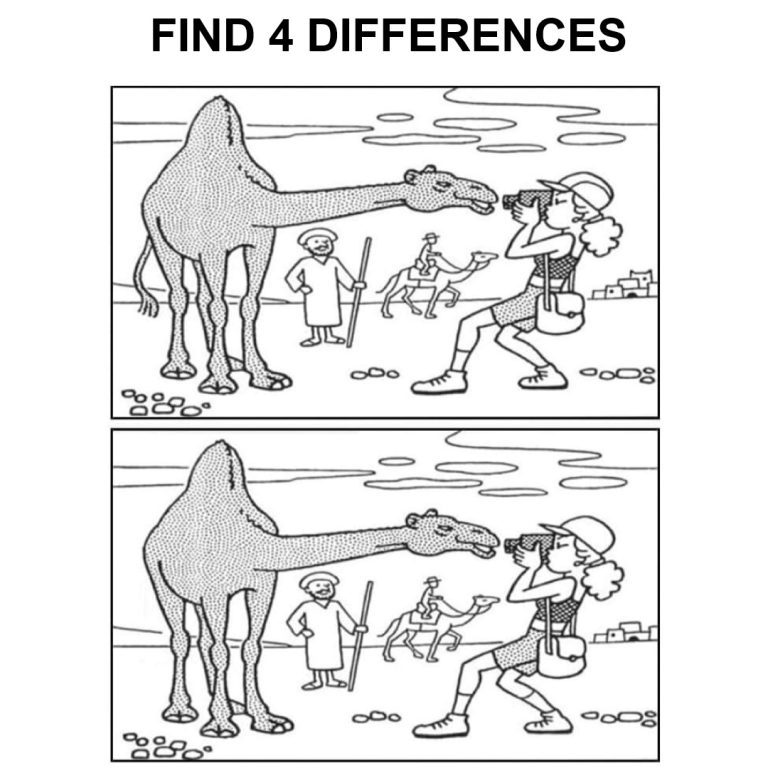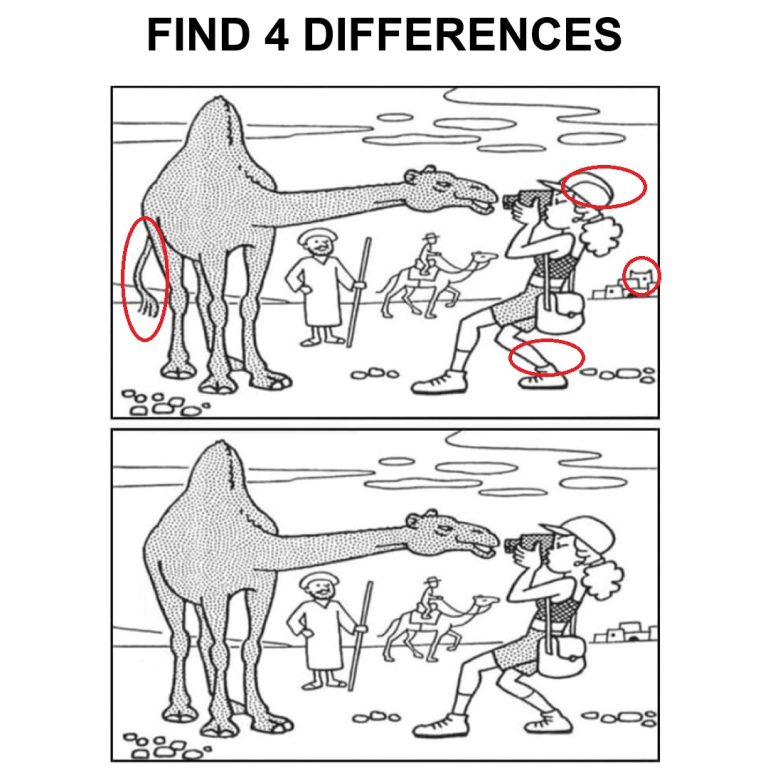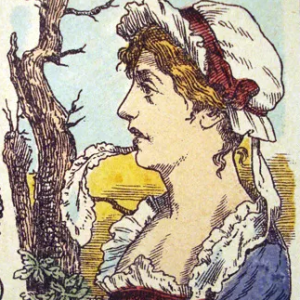You’ve probably come across them in magazines, newspapers, or social media—the classic “spot the difference” puzzles. At first glance, they seem like child’s play. But take a closer look, and suddenly, you’re squinting, tilting your head, and second-guessing your eyesight. These puzzles are more than just casual fun—they actually help sharpen your mind. Today, we’re diving into a desert-themed brain teaser starring camels, tourists, and cleverly hidden changes.

A Closer Look at the Camel Puzzle
Picture this: a dry, sun-soaked desert scene featuring a curious camel, a tourist with a camera, and a local man standing nearby. Add a couple of humble houses in the background, and voilà—you have a seemingly simple drawing. But here’s the catch: this image has a twin. And somewhere between the two nearly identical versions, four sneaky differences are waiting to be found.
Sounds easy? Don’t be fooled. These puzzles are a masterclass in distraction and subtlety.
Video: Difference Discovery Uncover The Secret
What Makes This Puzzle So Engaging?
There’s something especially captivating about puzzles set in real-life or cultural scenes. Camels and cameras might not be your everyday combo, but that contrast makes the challenge even more interesting.
This particular puzzle features a black-and-white line drawing, two nearly identical side-by-side frames, a simple narrative—a tourist photographing a camel, and subtle tweaks in the smallest of details.
It’s not just fun—it activates your brain’s pattern-recognition centers and forces you to focus. That’s why these puzzles are loved by both kids and adults alike.
Let’s Break Down the Differences
If you’ve already tried spotting them, you know it can get tricky. Here’s what makes this camel puzzle so brilliant: the changes are small but highly effective. Let’s walk through the four key differences:
1. The Camel’s Tail — A Vanishing Act
In the top image, the camel’s tail is clearly visible behind its left hind leg. But in the bottom image, it’s missing. It’s a blink-and-you-miss-it detail, but once you see it, you can’t unsee it.
2. The Girl’s Hat — A Style Switch
Video: ONLY 1 difference
Check out the girl snapping the photo. Her hat is different in both images. In the top one, the visor is turned backward, giving a casual look. But in the bottom image, it’s flipped to the front. Same hat, different vibe.
3. Background Building — The Missing Mark
Look toward the houses in the background. One of them has a distinct black dot in the top image. In the bottom one, that mark is mysteriously gone. It’s the kind of detail you only catch if you’re really zoning in.
4. The Girl’s Leg — Stripe or No Stripe?
Finally, focus on the photographer’s leg. In the top image, her left leg has a horizontal black stripe. That stripe disappears in the bottom image. Subtle? Definitely. But it’s what sets the puzzle apart from basic ones.

Why Your Brain Loves Challenges Like This
So what makes your brain light up when solving this kind of puzzle? It’s all about engaging multiple areas of cognition. You’re using visual memory, spatial reasoning, and attention all at once. Think of it as a gym workout—but for your brain.
Plus, there’s that little dopamine rush you get each time you find a difference. It’s mini-success after mini-success. And yes, it’s strangely satisfying.
Conclusion
Spot-the-difference puzzles are more than just a fun distraction. They’re a mental tune-up disguised as play. The camel-themed challenge proves how the smallest changes can trip up even the most focused eyes. With details like a rotated hat or a vanishing tail, this puzzle invites you to slow down and really look. So if you haven’t tried it yet, go back and test your vision. How fast can you find all four?
And remember—sometimes, the best brain workouts don’t come from books, but from pictures that make you think twice.
Let me know if you’d like a shorter version for social media, or a visual layout to pair with the puzzle!


